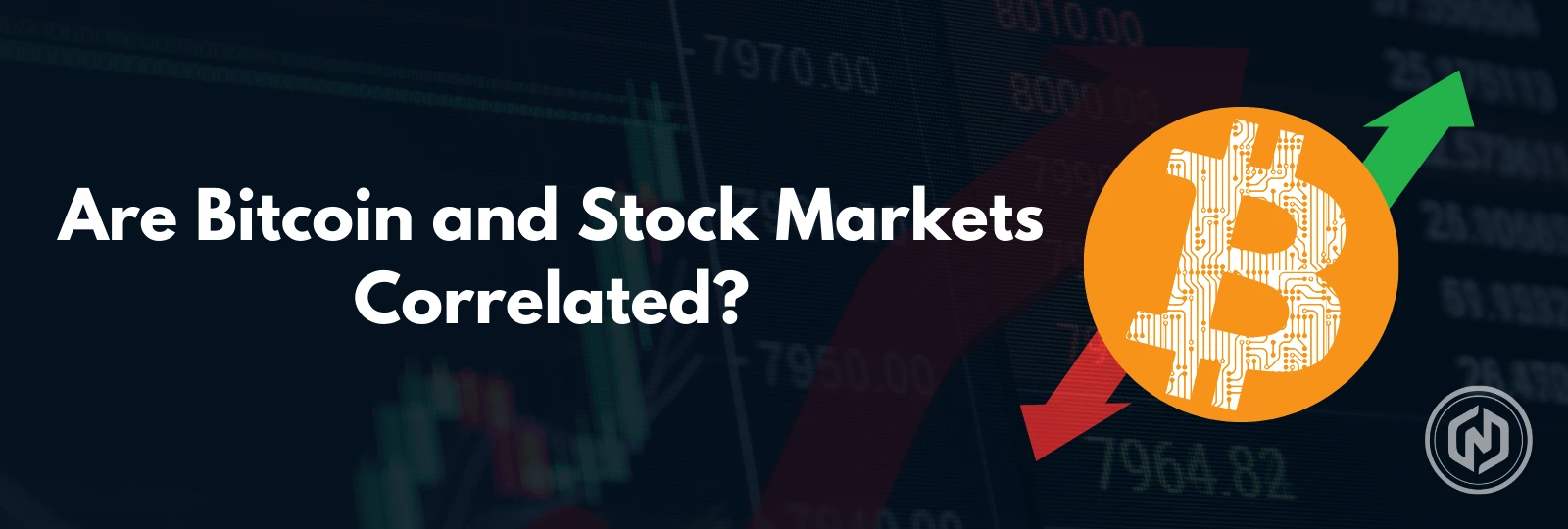The conventional financial services system has had weaknesses because of its centralized aspects and strict control measures. This brought forth the emergence of virtual money, with Bitcoin emerging at the center. Since its emergence into the market in 2009, Bitcoin has helped shape the financial sector in a big way. The bitcoin network hasn’t supplanted the stock exchange, which is the most fundamental part of anything commonly referred to as finance.
Another thing is that, more often than not, Bitcoin price movements and stock movements tend to be the palpable opposite of one another. For example, when Bitcoin performs and its price increases, stock prices are likely to be low: and vice versa. This relationship is basically what an inverse correlation is. Concerning statistics, a perfect inverse correlation is a number denoted by – 1.
What is Market Correlation?
Market correlation is a term used to specify the extent to which two different relative changes are positively or negatively related to each other. For instance, it can show how one category value over two changes with time in importance. To gauge this, experts use something called a correlation coefficient, usually denoted by the letter ‘r’ in specialized literature. This coefficient ranges from -1 to 1.
If the correlation coefficient takes the value of one, then it means that the two things move in perfect proportion. When one is going up, so does the other one. Out of the other comers, -1 is the situation where they move in contrary; when one goes up, the other goes down. A correlation of 0 indicates that the two things remain unconnected even in how they move.
Even though it may not be apparent, understanding crypto market correlation is useful for investors. This is because it assists the investors in forecasting the behavior of certain investments regarding other investments.
How are Bitcoin and the Stock Market Correlated?
Though each one of them has its peculiar nature, Bitcoin price and stock market can also influence each other. In a positive correlation, they would move in the same direction, while in a negative correlation, they would move in opposite directions.
When the risk level is high in the market, the purchasers adopt the trend, and they may go for whichever investments appear to them as low-risk, more calm industries as opposed to aggressive industries such as Bitcoin. This behavior is likely to affect the value not only of Bitcoin price but also the price of stocks.
Factors Influencing the Correlation
Various factors influence Bitcoin correlation to stock market:
- Regulation: Stricter rules for digital currencies can change how Bitcoin relates to stocks, making price predictions less reliable.
- Market Sentiment: Investor opinions and expectations about future market movements often drive the cryptocurrency world, affecting its relationship with stocks.
- Geopolitical Events: Unexpected global events (like political crises or natural disasters) can disrupt both markets, changing how they relate to each other.
- Institutional Investments: When big companies invest in both stocks and Bitcoin, it creates a stronger connection between the two markets. Changes in stock prices can directly impact Bitcoin prices.
- Inflation: When inflation causes stock prices to rise, more investors might buy and hold cryptocurrencies as a safeguard. This can alter the usual patterns between the two markets.
Historical Perspective of Bitcoin and Stock Market Correlation
When Bitcoin first came into the financial arena, many people presumed it would take over or displace conventional trading systems. Foremost, there were no evident links established between Bitcoin and stock exchange. Those early studies showed which market these two formed out were completely separated.
However, during the financial crisis brought about by man-made changes or geopolitical circumstances, Bitcoin and stock market correlation began to emerge. Strikingly, whenever there was a price eruption with large volatility of many stocks, it seemed many reasons would emerge to have an opposing tendency toward the primary prospects.
The year 2017, however, was the point of saturation for cryptocurrency. Decisively, huge investments were received by bitcoin, leading it to the status of standard assets. It thus created greater interfacing between Bitcoin and other conventional financial systems.
Stock Market Impact on Predicting Bitcoin’s Future Price
The stock market is one of the essential indicators in determining the Bitcoin Price Forecast. Since the creation of cryptocurrency networks, scholars have established a phenomenon where virtual commodity market trade correlates with the real market.
Several forces and variables may, as well, affect the price of Bitcoin in the short term. Such forces are the general mood of people, political situation, economic conditions, risks, and new policies. These factors cause the market to experience rapid changes in what people think about the valuation of Bitcoin.
In the long run, more trends in the price of the old Bitcoin will be basic trends. Such basic trends include factors such as aggregate demand and supply, network security without compromising on its growth in capacity, the increasing usage of Bitcoin, and the number of people using Bitcoin.
The price achievements of cryptocurrencies have been greatly driven by the activities of traditional markets. Notably, the tendencies raised during the hikes in interest rates by the Federal Reserve during the periods of 2017- 2018, expectations of economic stimulus in the period of 2020-2021, and the market crash post-COVID-19 in 2020 affected the price of bitcoin.
Conclusion
The correlation of Bitcoin and stock market is intricate and dynamic. Even though Bitcoin has brought innovations to the financial space, these innovations have not rendered all other markets obsolete. Instead, a convoluted relationship between Bitcoin and the stock market is emerging, which investors ought to comprehend.
The first thing worth noting is the relationship between Bitcoin price movement as regards stock prices, as various factors influence financial instruments. These include alterations in legal frameworks, the general mood that prevails in the markets, international relations, capital from institutional investors, and inflation.

